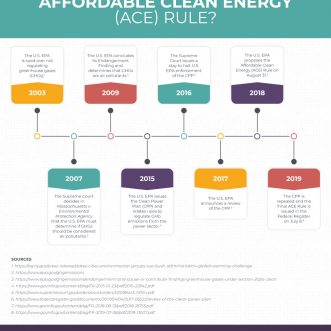2010 Greenhouse Gas Reporting Required
EPA’s December 7, 2009 announcement that CO2 is a “threat” to public health and the environment has brought additional focus to the ongoing legislative debate regarding climate change and the final Mandatory Greenhouse Gas Reporting rule (40 CFR 98). This rule was signed on September 22, 2009, published on October 30, 2009, and is effective December 29, 2009.
The rule covers approximately 85 percent of the nation’s greenhouse gas (GHG) emissions and will apply to roughly 10,000 facilities. EPA will develop an electronic reporting system for calendar year 2010. Reports for 2010 are due on March 31, 2011.
This rule requires facilities to calculate CO2 emissions or install monitoring systems where valid emission estimating methods are not currently available. This rule applies to:
- Operations that are one of 17 source categories (adipic acid production, aluminum production, ammonia manufacturing, cement production, electricity generation, HCFC-22 production, HFC-23 destruction processes, lime manufacturing, manure management systems, municipal solid waste landfills, nitric acid production, petrochemical production, petroleum refineries, phosphoric acid production, silicon carbide production, soda ash production, titanium dioxide production) unless excluded by specific caveats;
- Operations in one of seven source categories (ferroalloy production, glass production, hydrogen production, iron and steel production, lead production, pulp and paper manufacturing, zinc production) if the facility emits more than 25,000 metric tons (mt) of carbon dioxide equivalents (CO2e);
- Facilities with annual CO2e emissions from stationary fuel combustion sources (i.e., boilers, stationary internal combustion engines, process heaters, combustion turbines, and other stationary fuel combustion equipment with certain exclusions) that exceed 25,000 mt; and
- Suppliers of coal-based liquid fuels, natural gas and natural gas liquids, petroleum products, and industrial GHGs (fluorinated gases, nitrous oxide, and carbon dioxide).
To determine whether your facility is subject to the rule, you may wish to use EPA’s applicability tool.
Reporting of indirect electricity use is not required because the electricity generators will report those emissions. Portable equipment, emergency generators, emergency equipment, flares, and hazardous waste combustors (except those co-fired with fossil fuel) are exempt.
On January 1, 2010, monitoring or use of best available monitoring methods to calculate CO2e emissions must begin. EPA expects that most facilities will begin to comply with monitoring requirements by April 1, 2010, although extensions for continued use of best available monitoring beyond that date will be considered. Requests for extensions need to be submitted no later than January 28, 2010.
EPA’s stated purpose for this reporting is to collect accurate and timely data on GHG emissions data that can be used to inform future policy decisions. Expectations are that the information will be used to help establish emission baselines which will in turn impact future emission allowances, emission offsets, and carbon trading. The emissions data reported to EPA will be available to the public allowing for the identification of significant GHG emission sources.
If you are unclear about how this rule affects your facility, please contact one of CEC’s GHG experts:
Kris Macoskey (Pittsburgh), 800-365-2324, kmacoskey@cecinc.com
You may also email CEC’s GHG team for additional information at GHGENVHelp@cecinc.com.



Post a Comment